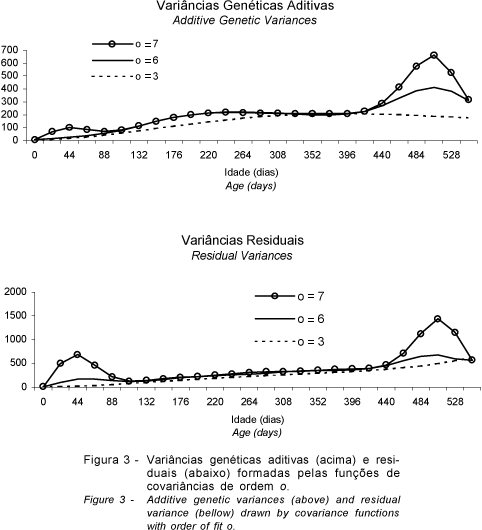Restricted maximum likelihood (REML) estimates of additive and residual variances and covariances for birth weight and adjusted weights at 120, 205, 240, 365, 420 e 550 days of age were used to estimate growth covariance functions (CFs) of Tabapuã beef calves. Data were observed on 41,415 animals born from 1975 to 1997 and raised under pasture conditions. Estimation of CFs is a very useful tool to analyze beef cattle growth. It was possible to estimate covariance between any pair of ages and the analyses of eigenfunctions associated with the eigenvalues of coefficients matrix of CFs showed that the growth curves of Tabapuã calves could be easily changed by selection. Weaning stress, compensatory growth and selection of animals in the final period caused changes on (co)variance trajectories. Therefore only CFs of more complex order were able to estimate values near to REML estimates. However, high order Legendre polynomials drew sharp waves on variances trajectories at the period edges, witch does not have a coherently biological reason.
beef cattle growth; covariance functions; genetic parameters; Legendre polynomial




























